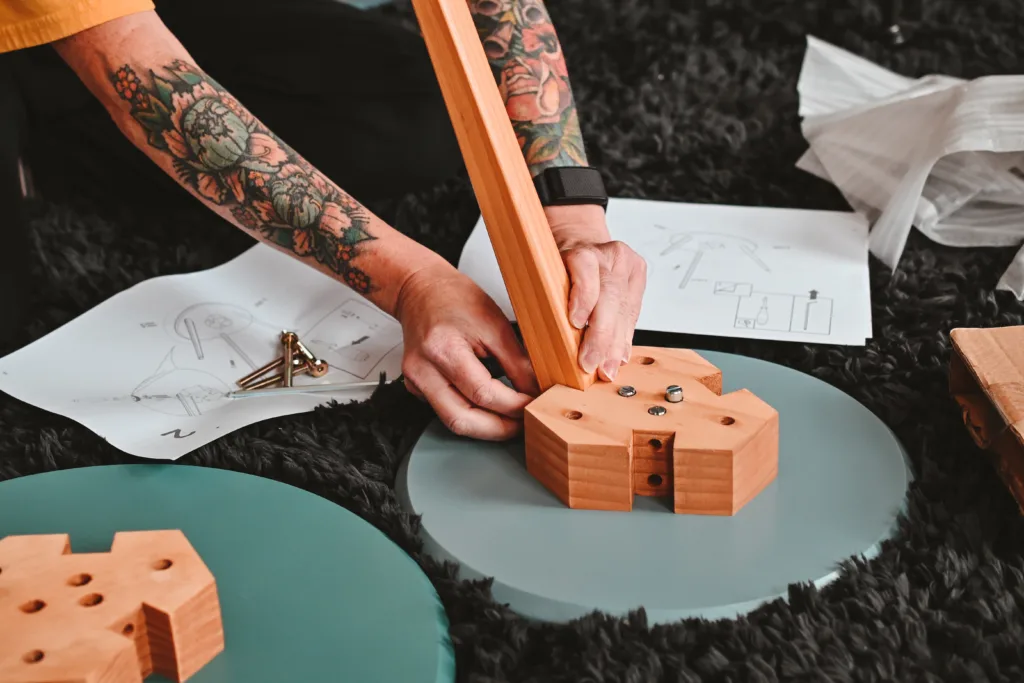Are you looking for an affordable and convenient solution to improve the air quality in your home? Look no further, because this article explores the world of DIY air purifier options. Whether you’re concerned about allergies, pollutants, or simply want to freshen up your living space, we’ve got you covered.
Discover innovative and cost-effective ways to create your very own air purifier, using easily accessible materials and simple steps. Say goodbye to stuffy air and hello to a cleaner and healthier environment for you and your loved ones. Upgrade your home with these DIY air purifier options today! Yes, there are several options for creating your own DIY air purifier.
If you’re looking for a more affordable and customizable solution to improve your indoor air quality, then DIY air purifiers can be a great alternative to commercial options. In this article, we will explore different types of DIY air purifiers and provide step-by-step instructions on how to make them.
Whether you’re interested in using houseplants, making a DIY box fan filter, creating a homemade activated charcoal filter, or assembling a DIY HEPA filter, we’ve got you covered. So let’s dive in and discover the world of DIY air purifiers!
Using Houseplants as Air Purifiers
Science behind Houseplants
Houseplants have been known to improve indoor air quality by naturally removing toxins and pollutants from the air. Through a process called phytoremediation, plants can absorb harmful substances through their leaves and roots, converting them into nutrients for their own growth. This process helps in reducing volatile organic compounds (VOCs), such as benzene, formaldehyde, and xylene.
Popular Air-purifying Houseplants
Some popular air-purifying houseplants include the Snake Plant, Spider Plant, Peace Lily, Boston Fern, and English Ivy. These plants have been shown to effectively remove toxins from the air and improve overall air quality. It’s important to choose plants that are suitable for the lighting conditions in your home and are safe for pets and children.
Creating an Indoor Garden
To utilize houseplants as air purifiers, you can create an indoor garden by placing several plants strategically around your living space. Grouping plants together can create a microclimate with increased humidity, which can benefit both the plants and the air quality. Additionally, incorporating plants into your home decor can add a touch of natural beauty and improve your overall well-being.
Making a DIY Box Fan Filter
How Box Fan Filters Work
A DIY box fan filter is a simple and effective way to improve air quality in your home. The concept is to attach a filter to the back of a box fan, allowing the fan to pull in and filter the air before blowing it out. The filter captures dust, pollen, and other allergens, providing cleaner air for you to breathe.
Materials Needed
To make a DIY box fan filter, you will need the following materials:
- Box fan
- Furnace filter or high-efficiency filter
- Tape
- Scissors
Step-by-Step Instructions
- Start by placing the box fan on a flat surface with the back facing up.
- Measure the dimensions of the fan back and cut the filter to fit.
- Place the filter onto the back of the fan, aligning the corners and edges.
- Use tape to secure the filter onto the fan, making sure it is firmly attached.
- Turn on the fan and enjoy the cleaner air being circulated in your space.
Homemade Activated Charcoal Filter
Benefits of Activated Charcoal Filters
Activated charcoal has long been used for its air purifying properties. It is highly porous and has the ability to trap harmful chemicals, odors, and gases. Homemade activated charcoal filters can be an effective solution for reducing volatile organic compounds and improving indoor air quality.
Materials Required
To create a homemade activated charcoal filter, gather the following materials:
- Activated charcoal
- Mesh or fabric material
- Rubber bands or string
- Scissors
Building the Filter
- Cut the mesh or fabric material into a rectangle that is larger than the activated charcoal.
- Place a layer of activated charcoal onto the center of the material.
- Fold the material in half, enclosing the activated charcoal inside.
- Secure the edges using rubber bands or string, creating a pouch-like structure.
- Hang the filter in an area where air circulation is present, such as near a window or fan.
By utilizing the absorptive properties of activated charcoal, this homemade filter can help purify the air in your home.
Creating a DIY HEPA Filter
Understanding HEPA Filters
HEPA (High-Efficiency Particulate Air) filters are widely used in commercial air purifiers for their ability to capture tiny airborne particles. Creating a DIY HEPA filter can be a cost-effective alternative to buying a commercial unit.
Materials Needed
To assemble a DIY HEPA filter, gather the following materials:
- HEPA filter
- Cardboard or plastic frame
- Adhesive or tape
Assembling the HEPA Filter
- Measure the dimensions of the HEPA filter and cut the cardboard or plastic frame accordingly.
- Secure the HEPA filter onto the frame using adhesive or tape.
- Place the DIY HEPA filter in an area where it can efficiently circulate and filter the air.
- Monitor the performance of the DIY HEPA filter and replace the filter as needed.
While a homemade HEPA filter may not match the efficiency of commercial-grade units, it can still provide a noticeable improvement in air quality.

Considerations for DIY Air Purifiers
Effectiveness of DIY Air Purifiers
It’s important to note that DIY air purifiers may not be as effective as commercial options in fully removing airborne pollutants. While they can significantly reduce certain allergens and improve air quality to some extent, their performance may vary depending on various factors such as the type of DIY air purifier, the specific pollutant levels, and the size of the area being purified.
Maintenance and Cleaning
Regular maintenance and cleaning are essential for DIY air purifiers to ensure optimal performance. Clean or replace filters as recommended by the manufacturer or based on the pollution levels in your environment. Additionally, dust and vacuum your living space regularly to minimize the buildup of airborne particles.
Potential Risks
There are a few potential risks associated with DIY air purifiers. If not properly constructed or maintained, DIY air purifiers may malfunction or become less effective over time. It is also important to consider the materials used, as some filters or components may release harmful particles into the air. Always exercise caution and follow instructions carefully when creating and using DIY air purifiers.
Comparing DIY Air Purifiers with Commercial Options
Pros and Cons of DIY Air Purifiers
DIY air purifiers offer advantages such as affordability, customization, and the satisfaction of creating something yourself. These DIY solutions can be tailored to your specific needs and easily modified or upgraded as necessary. However, DIY air purifiers may not have the same level of performance or long-term durability as commercial options. They also may not come with advanced features or warranties that are provided by commercial models.
Benefits of Commercial Air Purifiers
Commercial air purifiers are specifically designed to effectively remove a wide range of pollutants and contaminants from the air. They often use advanced filtration systems, have higher CADR (Clean Air Delivery Rate), and may include additional features such as sensors and timers. Additionally, commercial air purifiers are usually backed by warranties and customer support, providing peace of mind and reliability.
Making an Informed Choice
When deciding between a DIY air purifier and a commercial option, it’s important to consider your specific requirements, budget, and the air quality concerns in your home. Assess the size of the area you need to purify, the specific pollutants you want to target, and the features that are important to you. By weighing the pros and cons, you can make an informed choice that suits your needs and preferences.

Testing the Efficacy of DIY Air Purifiers
Measuring Air Quality
To determine the effectiveness of DIY air purifiers, it’s crucial to measure the air quality before and after implementing the purifier. Use indoor air quality monitors or test kits to measure the levels of pollutants such as VOCs, particulate matter, and allergens. This data will provide valuable insights into the effectiveness of your DIY air purifier.
Comparing Particle Levels
One way to assess the efficiency of a DIY air purifier is by comparing indoor particle levels with outdoor particle levels. By monitoring the number of particles per cubic meter in both environments, you can gauge the reduction in particle concentration achieved by your DIY air purifier.
Professional Testing
For a more comprehensive evaluation of your DIY air purifier, consider professional testing. Environmental testing companies can assess the air quality in your home, measure the pollutant levels, and provide expert insights on the effectiveness of your DIY air purifier.
Tips for Improving Indoor Air Quality
Regular Ventilation
Proper ventilation plays a vital role in maintaining good indoor air quality. Ensure that your home has adequate ventilation by opening windows and doors to allow fresh air circulation. Use exhaust fans in bathrooms and kitchens to remove moisture and odors. Regularly clean and maintain ventilation systems to prevent the buildup of dust and contaminants.
Reducing Indoor Pollutants
Take steps to reduce indoor pollutants by eliminating or minimizing their sources. Keep your living space clean and dust-free, regularly vacuum carpets and upholstery, and use natural cleaning products whenever possible. Avoid smoking indoors and limit the use of chemical-based products that can release harmful substances into the air.
Monitoring Humidity Levels
Maintaining appropriate humidity levels can help prevent the growth of mold and mildew, which can negatively impact air quality. Use a hygrometer to monitor humidity levels and consider using dehumidifiers or humidifiers to achieve optimal levels. Keeping indoor humidity between 30% and 50% is generally recommended.

Conclusion
Improving indoor air quality is crucial for your health and well-being. While commercial air purifiers are widely available and effective, DIY air purifiers can offer a cost-effective alternative. By utilizing houseplants, creating a DIY box fan filter, making a homemade activated charcoal filter, or assembling a DIY HEPA filter, you can take control of the air quality in your home. Consider the effectiveness, maintenance, and potential risks of DIY options before making a decision. Remember to test the efficacy of your DIY air purifier and implement other measures such as regular ventilation and reducing indoor pollutants to further enhance indoor air quality. With these DIY air purifiers, you can breathe easier and enjoy a cleaner and healthier living environment.
Check out another great read…
Can Air Purifiers Save On Heating And Cooling Bills?

